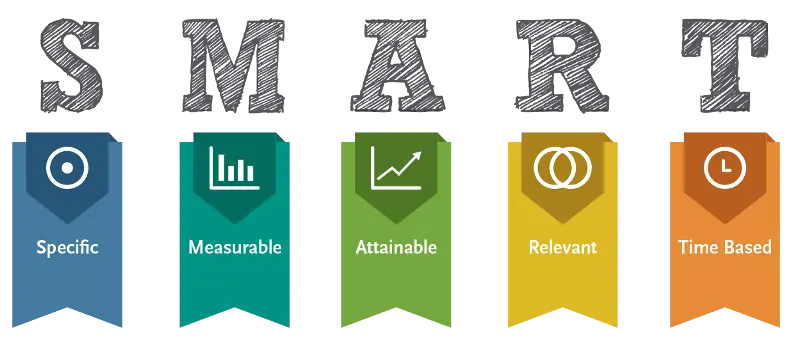
Websites serve as the online face of your business, providing customers with a glimpse into the products, services, and brand identity. a virtual storefront, providing customers with a glimpse into the products, services, and brand identity. However, simply having a website is not enough; businesses need to ensure that their websites are driving meaningful results and contributing to their bottom line. This is where website KPIs come into play.
Key Performance Indicators (KPIs) are how you measure the success and effectiveness of that website. By tracking and analyzing these metrics, businesses can gain valuable insights into the performance of their websites, identify areas for improvement, and make data-driven decisions to drive growth. In this article, we will explore the importance of mastering website KPIs for business success and provide actionable strategies to enhance performance.
What are website KPIs and why are they important?
Website KPIs are measurable metrics that help businesses gauge the performance and effectiveness of their websites. These metrics can vary depending on the goals and objectives of the business but generally revolve around key areas such as conversions, user engagement, and traffic.
Mastering website KPIs is crucial for businesses looking to optimize their online presence and drive growth. By monitoring and analyzing these metrics, businesses can:
- Gain insights into customer behavior and preferences.
- Identify areas of improvement and optimize user experience.
- Measure the effectiveness of marketing and advertising campaigns.
- Make data-driven decisions to enhance website performance.
- Identify opportunities for business growth and expansion.

Setting SMART goals
Before diving into specific website KPIs, it’s essential for businesses to set SMART goals. SMART stands for Specific, Measurable, Achievable, Relevant, and Time-bound. Setting SMART goals ensures that the website KPIs align with the overall business objectives and provide clear direction for improvement.
- Specific: Clearly define the desired outcome. For example, increasing the conversion rate by 20%.
- Measurable: Establish metrics to track progress and success. For example, tracking the number of completed purchases or form submissions.
- Achievable: Set realistic goals that can be attained with the available resources and capabilities.
- Relevant: Ensure that the goals align with the overall business objectives and contribute to growth.
- Time-bound: Set a specific timeframe to achieve the goals. For example, increasing website traffic by 30% within six months.
By setting SMART goals, businesses can focus their efforts on measurable outcomes and make meaningful progress towards improving website KPIs.
Key website KPIs for businesses
When it comes to website KPIs, there are several key metrics that businesses should track and analyze. Let’s explore some of the most important ones:
Conversion rate
The conversion rate is a critical website KPI that measures the percentage of visitors who take the desired action, such as making a purchase, filling out a form, or subscribing to a newsletter. A high conversion rate indicates an effective website that successfully motivates visitors to become customers.
Bounce rate
The bounce rate measures the percentage of visitors who leave the website without interacting with any other pages. A high bounce rate can indicate issues such as poor website design, irrelevant content, or slow loading times. By reducing the bounce rate, businesses can increase user engagement and encourage visitors to explore further.
Average session duration
The average session duration represents the average amount of time visitors spend on the website during a single session. A longer session duration indicates that visitors find the content engaging and relevant. By providing valuable information and compelling experiences, businesses can increase the average session duration and improve user engagement.
Page views
Page views refer to the total number of pages viewed by visitors on the website. Monitoring page views helps businesses understand which pages are popular and which ones need improvement. By analyzing page view data, businesses can optimize their content strategy and enhance the user experience.
Exit rate
The exit rate measures the percentage of visitors who leave the website after viewing a specific page. High exit rates on key pages, such as product pages or checkout pages, can indicate barriers to conversion. By identifying and addressing these barriers, businesses can reduce exit rates and increase conversion rates.
Tracking these key website KPIs allows businesses to gain valuable insights into user behavior, identify areas for improvement, and optimize their websites for better performance.
Tracking website KPIs
To effectively track and analyze website KPIs, businesses need to utilize analytics tools that provide comprehensive data and insights. Some popular analytics platforms include Google Analytics, Adobe Analytics, and Kissmetrics. Here are the steps to effectively track website KPIs:
- Using analytics tools: Integrate an analytics tool into the website to collect data on user behavior, traffic sources, and conversions. Google Analytics, with its robust features and user-friendly interface, is a popular choice among businesses.
- Setting up goals and funnels: Establish specific goals within the analytics tool to track conversions and user interactions. Define conversion funnels to visualize the steps users take before completing a desired action. This helps identify bottlenecks and areas for improvement.
- Regular monitoring and analysis: Regularly review the analytics data to identify trends, patterns, and areas of concern. Analyze the performance of different website KPIs over time and make data-driven decisions to optimize website performance.
By consistently tracking and analyzing website KPIs, businesses can gain valuable insights and make informed decisions to enhance their online presence.
Improving website KPIs
Tracking website KPIs is just the beginning. To truly master website KPIs and drive business growth, businesses need to take proactive steps to improve their performance. Here are some strategies to consider:
Optimizing landing pages
Landing pages are crucial elements of a website that often serve as entry points for visitors. By optimizing landing pages with compelling headlines, persuasive copy, and clear calls-to-action, businesses can increase conversion rates and guide visitors towards desired actions.
Enhancing user experience
A positive user experience is vital for improving website KPIs. Businesses should focus on providing a seamless and intuitive browsing experience. This includes optimizing website navigation, ensuring fast loading times, and making the website mobile-friendly. By prioritizing user experience, businesses can reduce bounce rates and increase engagement.
Streamlining conversion funnels
Conversion funnels represent the journey visitors take from landing on the website to completing a desired action. By streamlining conversion funnels and removing unnecessary steps or distractions, businesses can improve the likelihood of conversions. Clear and straightforward checkout processes, simplified form submissions, and intuitive user flows contribute to higher conversion rates.
Testing and iterating
Continuous testing and iteration are essential for optimizing website KPIs. A/B testing allows businesses to compare different versions of a webpage or element to determine which performs better. By testing variations of headlines, call-to-action buttons, colors, and layouts, businesses can make data-driven decisions to improve website performance and increase conversions.
By implementing these strategies, businesses can optimize their websites, enhance user experiences, and ultimately improve their website KPIs.

Talk Strategy with a Fractional CMO
SEO. More SEO traffic with higher conversion rates.
Paid Media. Paid strategies with clear ROI.
Content. Epic content that attracts and gets shared.
The role of content in improving website KPIs
High-quality and engaging content is a key factor in mastering website KPIs. Here’s how businesses can leverage content to improve their website performance:
Creating engaging and relevant content
Compelling content keeps visitors engaged and encourages them to explore further. By producing informative blog posts, engaging explainer videos about business, and visually appealing infographics, businesses can attract and retain visitors, leading to increased website KPIs such as average session duration and page views.
Incorporating SEO strategies
Search Engine Optimization (SEO) plays a crucial role in improving website visibility and attracting organic traffic. By conducting keyword research and incorporating relevant keywords into website content, businesses can increase their chances of ranking higher in search engine results. Optimized content helps drive targeted traffic, improves conversion rates, and positively impacts website KPIs.
Using compelling calls-to-action
Effective calls-to-action (CTAs) guide visitors towards desired actions. By using compelling CTAs that clearly communicate the value proposition and create a sense of urgency, businesses can increase conversion rates. Whether it’s signing up for a newsletter, making a purchase, or requesting a demo, well-placed and persuasive CTAs drive website KPIs.
Mobile optimization for website KPIs
Our world is increasingly mobile, and optimization is linked to website success. Here’s why and how businesses can optimize their websites for mobile devices:
Importance of mobile-friendly design
With the majority of internet users accessing websites through mobile devices, businesses must prioritize mobile-friendly design. Mobile-responsive websites adapt to different screen sizes and provide a seamless browsing experience. A mobile-friendly design enhances user experience, reduces bounce rates, and increases website KPIs.
Responsive web design
Responsive web design ensures that websites automatically adjust their layout and content based on the device being used. By implementing responsive design principles, businesses can deliver consistent experiences across desktops, tablets, and mobile devices. This leads to improved user satisfaction and increased website KPIs.
Mobile page speed optimization
Mobile page speed is a critical factor in user experience and website performance. Slow-loading mobile pages can frustrate visitors and lead to high bounce rates. By optimizing page speed through techniques such as image compression, minification of code, and caching, businesses can enhance mobile performance and improve website KPIs.
Social media and website KPIs
Social media platforms play a significant role in driving traffic and engagement for websites. Here’s how businesses can leverage social media to improve website KPIs:
Integrating social media platforms into the website allows businesses to showcase their social presence and provide avenues for visitors to engage and connect. Including social media sharing buttons, embedding social media feeds, and featuring user-generated content create opportunities for increased social interaction and improved website KPIs.
Social media platforms are powerful tools for driving traffic to websites. By strategically promoting website content, blog posts, and offers on social media platforms, businesses can attract relevant visitors to their websites. This increases website KPIs such as page views, average session duration, and conversions.
Social sharing and engagement metrics
Monitoring social sharing and engagement metrics provides insights into the effectiveness of social media efforts in driving website traffic and user engagement. Metrics like likes, shares, comments, and click-throughs from social media platforms help businesses gauge the impact of their social media strategies on website KPIs.
Benchmarking and competitive analysis
Benchmarking and analyzing competitors’ performance can provide valuable insights and set realistic targets for improving website KPIs. Here’s how businesses can utilize benchmarking and competitive analysis:
Identifying industry benchmarks
Researching industry benchmarks allows businesses to understand the average performance metrics for their specific industry. By comparing their website KPIs to industry standards, businesses can identify areas where they excel or need improvement. This enables setting realistic targets and measuring progress effectively.
Analyzing competitors’ performance
Analyzing competitors’ websites and performance metrics helps businesses gain insights into successful strategies and identify areas for improvement. By evaluating competitors’ website designs, content strategies, user experiences, and conversion funnels, businesses can learn from their successes and adapt their own approaches to enhance website KPIs.
Setting realistic targets
Based on industry benchmarks and competitor analysis, businesses can set realistic targets for improving website KPIs. Setting achievable goals allows businesses to measure progress accurately and make informed decisions about optimizing their websites. By continuously monitoring and adjusting targets, businesses can ensure ongoing improvement.
Continuous improvement and adaptation
Mastering website KPIs is an ongoing process that requires continuous improvement and adaptation. Here are some strategies to consider:
Monitoring trends and changes
The digital landscape is constantly evolving, with new technologies, consumer behaviors, and industry trends emerging regularly. By staying updated on these trends and changes, businesses can adapt their strategies and ensure that their websites remain relevant and effective in achieving their goals.
A/B testing and experimentation
A/B testing involves comparing two versions of a webpage or element to determine which one performs better. By conducting A/B tests on different aspects of the website, such as headlines, layouts, or call-to-action buttons, businesses can gather data-driven insights and continuously optimize website KPIs.
Staying updated with technology advancements
Advancements in technology can significantly impact website performance. From mobile optimization to voice search capabilities, businesses need to stay updated with the latest technological advancements and incorporate them into their website strategies. By leveraging technology effectively, businesses can improve website KPIs and stay ahead of the competition.
In conclusion, mastering website KPIs is essential for businesses to optimize their online presence, drive growth, and achieve their objectives. By setting SMART goals, tracking and analyzing key website KPIs, improving user experience, leveraging content strategies, optimizing for mobile devices, utilizing social media, benchmarking, and continuously adapting, businesses can unlock the full potential of their websites. Regular monitoring, testing, and iteration are crucial to ensuring ongoing improvement and success.
Table: 20 Website KPIs and Why They Are Important
| 1 | Traffic. The number of people visiting your website is one of the most important KPIs to track. This metric helps you understand the effectiveness of your marketing efforts in driving traffic to your website. |
| 2 | Unique Visitors. This metric measures the number of unique visitors to your website. It is important to know how many different people are visiting your site, as it can help you determine the effectiveness of your marketing campaigns. |
| 3 | Bounce Rate. The percentage of people who leave your website after viewing only one page. A high bounce rate indicates that people are not finding what they are looking for on your website. In Google Analytics 4, the metric is now referred to as Engaged Sessions. |
| 4 | Pages per Session. This metric measures the number of pages a user visits during a single session on your website. It is an indication of the level of engagement your visitors have with your website. |
| 5 | Average Session Duration. This metric measures the amount of time visitors spend on your website on average. It can help you determine if your website is engaging enough to keep visitors interested. |
| 6 | Exit Pages. This metric tracks the pages where users leave your website. It can help you determine which pages are not performing well and need to be improved. |
| 7 | Conversion Rate. The percentage of visitors who complete a desired action on your website, such as filling out a form or making a purchase, is known as the conversion rate. This metric is a good indicator of how effective your website is in converting visitors into customers. |
| 8 | Cost Per Acquisition. This metric measures the cost of acquiring a customer through your website. It can help you determine the effectiveness of your marketing campaigns. |
| 9 | Revenue per Visitor. This metric measures the amount of revenue generated per visitor to your website. It can help you determine the effectiveness of your website in generating revenue. |
| 10 | Return on Investment (ROI). This metric measures the return on investment of your marketing campaigns. It is important to track this metric to determine the effectiveness of your marketing efforts. |
| 11 | Click-through Rate (CTR). This metric measures the percentage of people who click on a link to your website. It is an indication of how effective your online advertising campaigns are. |
| 12 | Cost Per Click (CPC). This metric measures the cost of each click on your online advertising campaigns. It is important to track this metric to ensure that you are getting a good return on your investment. |
| 13 | Cost Per Impression (CPI). This metric measures the cost of each impression of your online advertising campaigns. It is important to track this metric to ensure that you are getting a good return on your investment. |
| 14 | Search Engine Rankings. This metric measures your website’s position in search engine results pages (SERPs). It is important to track this metric to determine the effectiveness of your search engine optimization (SEO) efforts. |
| 15 | Organic Traffic. This metric measures the number of visitors who find your website through search engines. It is an indication of the effectiveness of your SEO efforts. |
| 16 | Referral Traffic. This metric measures the number of visitors who find your website through referrals from other websites. It can help you determine the effectiveness of your backlinking efforts. |
| 17 | Social Media Engagement. This metric measures the level of engagement your website has on social media platforms such as likes, shares, and comments. It is important to track this metric to determine the effectiveness of your social media marketing efforts. |
| 18 | Mobile Traffic. This metric measures the percentage of visitors who access your website through mobile devices. It is important to track this metric to ensure that your website is optimized for mobile devices. |
| 19 | Page Load Time. This metric measures the time it takes for your website to load. A fast page load time is important for providing a good user experience and can also improve your search engine rankings. |
| 20 | Error Pages. This metric tracks the number of error pages on your website, such as 404 pages. It is important to track this metric to ensure that your website is functioning properly and to fix any issues that arise. |
Conclusion
In conclusion, mastering website KPIs is essential for businesses looking to optimize their online presence, drive growth, and achieve their objectives. By setting SMART goals, tracking and analyzing key website KPIs, improving user experience, leveraging content strategies, optimizing for mobile devices, utilizing social media, benchmarking, and continuously adapting, businesses can unlock the full potential of their websites. Remember to focus on the KPIs that are most important to your business goals and track them consistently over time. Regular monitoring, testing, and iteration are crucial to ensuring ongoing improvement and success.
If you need help understanding and tracking your website’s KPIs, you can acquire our SEO management services or can book a strategy call with our team today. We can help you identify the most important metrics to track and provide guidance on how to improve your website’s performance.







